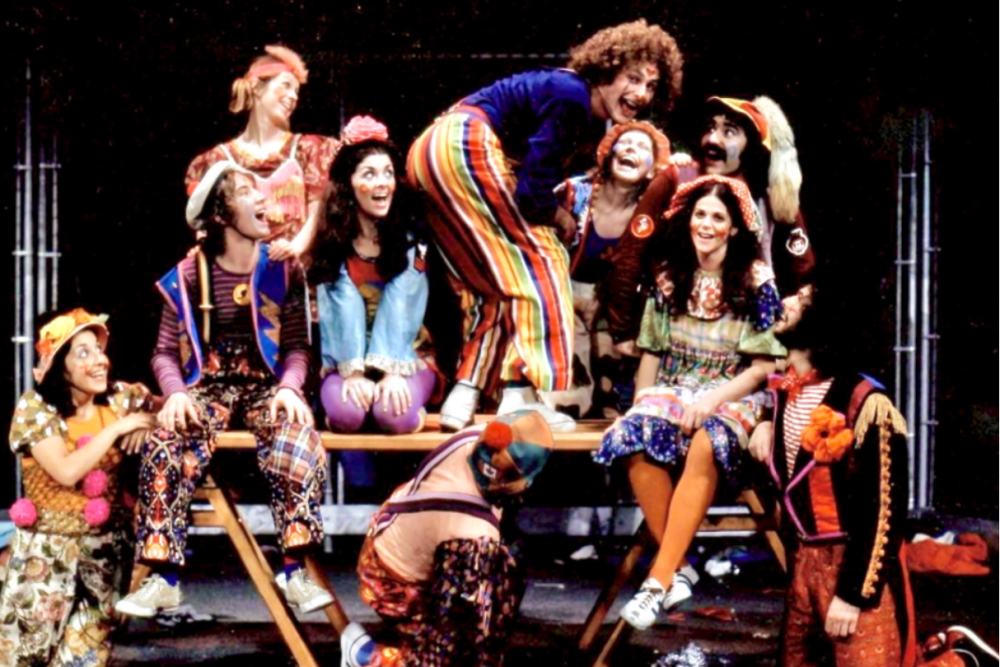New documentary series by diverse directors chronicles B.C.'s history
Lantern Films’ Behind the Façade, airing on the Knowledge Network, features short films about resilience, community
Nash Gill (top right, pictured with his family) discovered love letters between his parents dating back to the 1930s. He’s featured in Baljit Sangra’s documentary short, Have You Forgotten About Me?.
Lantern Films’ Behind the Façade series launches on the Knowledge Network on June 3.
VANCOUVER DIRECTOR BALJIT Sangra remembers attending the ceremony for the oldest standing Sikh Temple in North America when it became a National Historic Site of Canada in 2002. Abbotsford’s Gur Sikh Temple, which was built in 1911, represents a history of hardship, sacrifice, community, and resilience. In her new short film, Have You Forgotten Me? Sangra shares the stories of the region’s original Sikh pioneers and the struggles they experienced as newcomers to the country and their search for a sense of place and home.
The documentary will be featured on the Knowledge Network’s 150 Stories That Shape British Columbia, premiering June 3. The short is part of Lantern Films’ new series, Behind the Façade, which has been nominated for a Golden Sheath. It’s a collection of 10 award-winning shorts of resistance and resurgence from diverse communities.
Have You Forgotten Me? director Baljit Sangra.
In an interview with Stir, Sangra explains that title of her documentary refers to a letter written in the 1930s by a Sikh woman in India to her husband in Abbotsford. It was one of many letters the woman wrote during the couple’s 20-year long separation; the Depression, restrictive immigration polices, and employment instability delayed her journey to join him. Abbotsford resident Nash Gill, who’s featured in the film, found his parents’ letters in the metal suitcase his father came with.
“The letters are so beautiful,” Sangra says. “There’s was one where she said, ‘It’s been so long. I’ve lost my entire youth waiting for you. Have you forgotten me?’ That story really spoke to us.
“We were able to dip into the family’s archives dating back to the 1930s, and his father’s journey is so much like the journey of our community: coming here, settling, how hard it was to find work, he wasn’t able to keep his turban…,” she says. “It’s a beautiful story and it speaks to all our stories in a way and how we’re all connected.”
Have You Forgotten Me? ties the past to the present; the temple’s historic site now a has a museum. “A lot of times historical buildings were never stories that belonged to people of colour,” Sangra says.
All of the films in Behind the Façade have a building as an anchor, acting as the entryway to the stories of people behind or connected to them. Among the other titles in the series are Nuxalk Radio directed by Banchi Hanuse, about a radio station dedicated to keeping the Nuxalkmc language alive (VIFF 2020 Sea to Sky Award Winner); The Train Station by Lyana Patrick, in which she narrates her family’s story of love and survival at Lejac Indian Residential School; and Ode to a Seafaring People by Joella Cabalu, which features spoken-word artist Sol Diana and reflects the resiliency of the Filipino community.
Patrick examines the fine line between kitsch and caricature in The Tomahawk, in which Skwxwú7mesh Elder and carver Robert Yelton and restaurant owner Chuck Chamberlain share stories of the oldest family-run eatery in British Columbia.
Patrick teamed up with Rosemary Georgeson for A Place to Belong, which celebrates Christmas at the very first Friendship Centre, located in East Vancouver, and reveals the story behind the Friendship Centre movement.
Lantern Films’ co-owner Dave Rodden-Shortt directed two films in the series, with Happytime Social Club giving a glimpse into life as a gay man in Vancouver in the 1950s. The documentary stemmed from the discovery of memorabilia of the late Joseph R. Selsey, whose mementos and photos were found in a shoebox by a dumpster in 2015. (Those belongings are now part of the City of Vancouver archives.)
One of the items discovered was a membership card to the Happytime Social Club at 1022 Davie Street, in the basement of a dance club that later became home to Celebrities. It took some research to confirm that bottle club was in fact a gay bar, Rodden-Shortt says: “I went through all these ads for the different social clubs in Vancouver and what you realize is they would all say what they were for, like ‘gentlemen to meet ladies’; they had one for tall people. Happytime Social Club would never say what it was for. Finally, there was an ad that had a little poem in it that basically implied it was a gay bar.
Happytime Social Club director Dave Rodden-Shortt.
“We don’t really know much about the person who died, so in the film I’m taking his belongings and projecting them onto the wall of the basement of Celebrities where the bar would have been, and imagining what his life was like—which turns out to be he was pretty lucky in a lot of ways,” Rodden-Shortt says. “I think he had a good life; that’s what it looks like from his photos, and that’s not the case for so many queer people at that time.”
Rodden-Shortt (who runs Lantern Films with Jessica Hallenbeck) also directed Casa Mia using newspaper headlines to explore the history of rum running in Vancouver. George C. Reifel built the 21,000-square-foot Spanish Revival mansion in 1930. Rodden-Shortt’s team was granted access to the home on Southwest Marine Drive for their story about how it was built. “It’s kind of an age-old tale of people who have money getting away with a lot,” Rodden-Shortt says. “It was interesting working on it in the Trump era, not to compare them, but just in terms of how money works.”
In the era we’re living in, the filmmakers say being a documentarian is meaningful work that comes with a tremendous responsibility to be truthful and transparent. “It becomes part of the archives,” Rodden-Shortt says. “You’re participating in history-making and you get to shift the narrative to include more perspectives.
“It’s so important to tell these stories,” he says. “Otherwise, it’s just this one dominant narrative that gets told over and over.”
Sangra adds: “I see documentary as a vehicle to give voice to the voiceless and to put more stories out there,” she says. “It’s powerful.”















